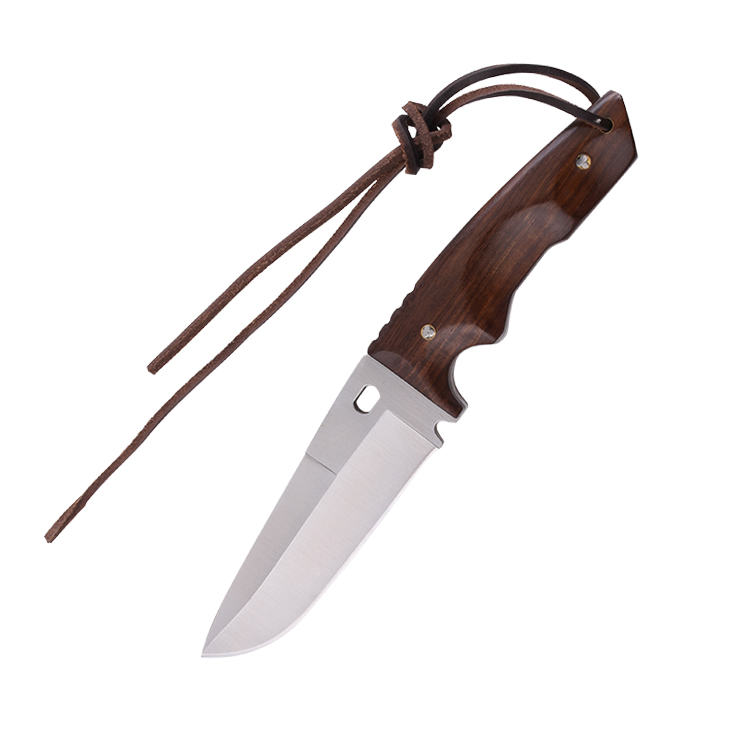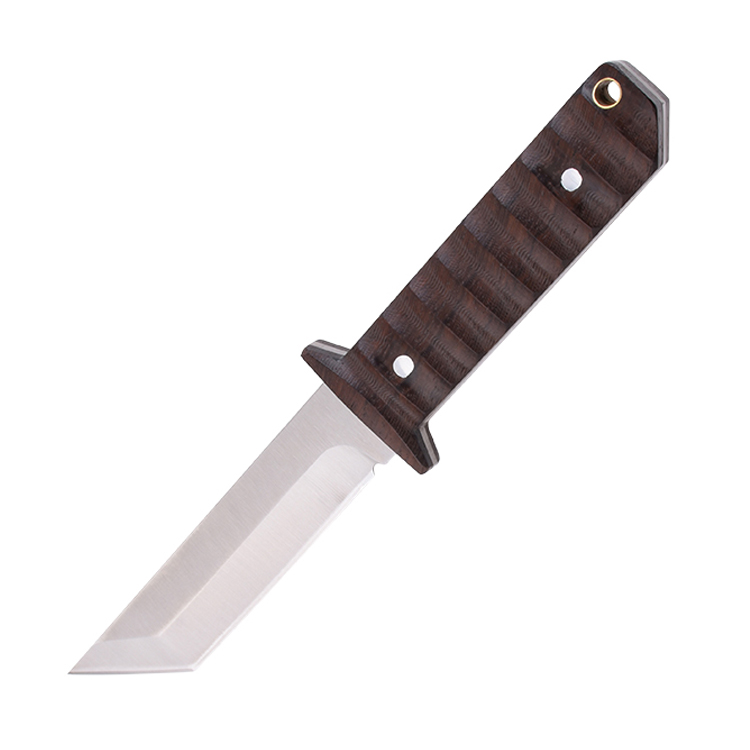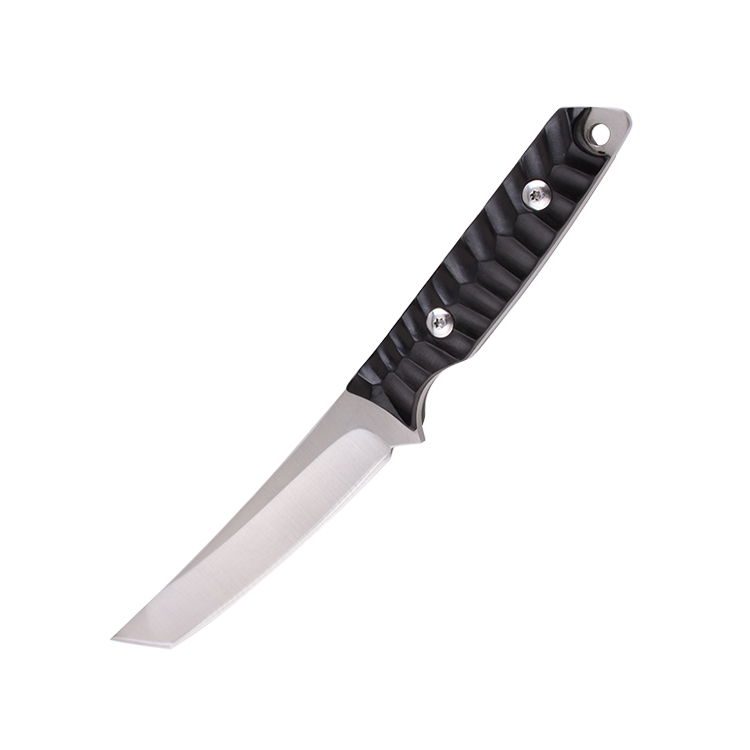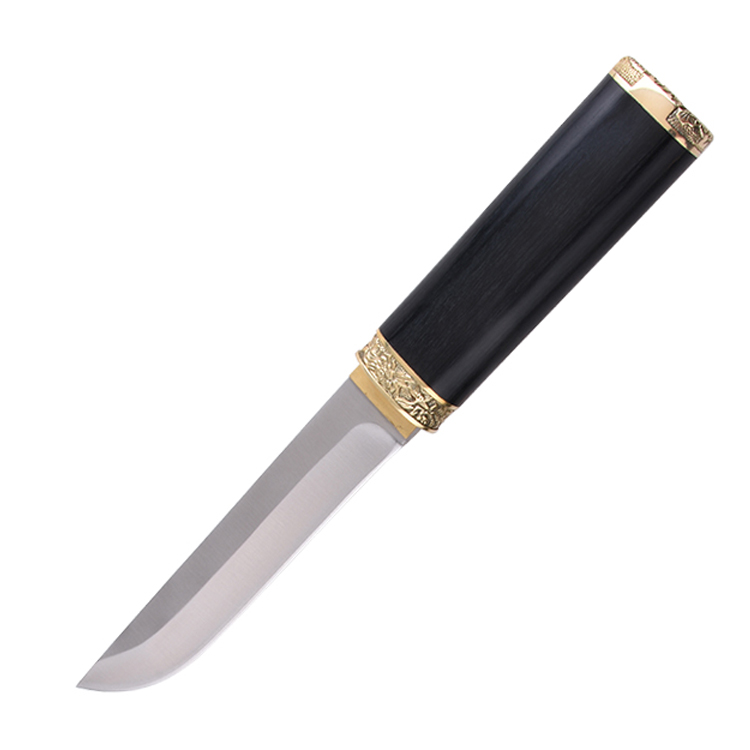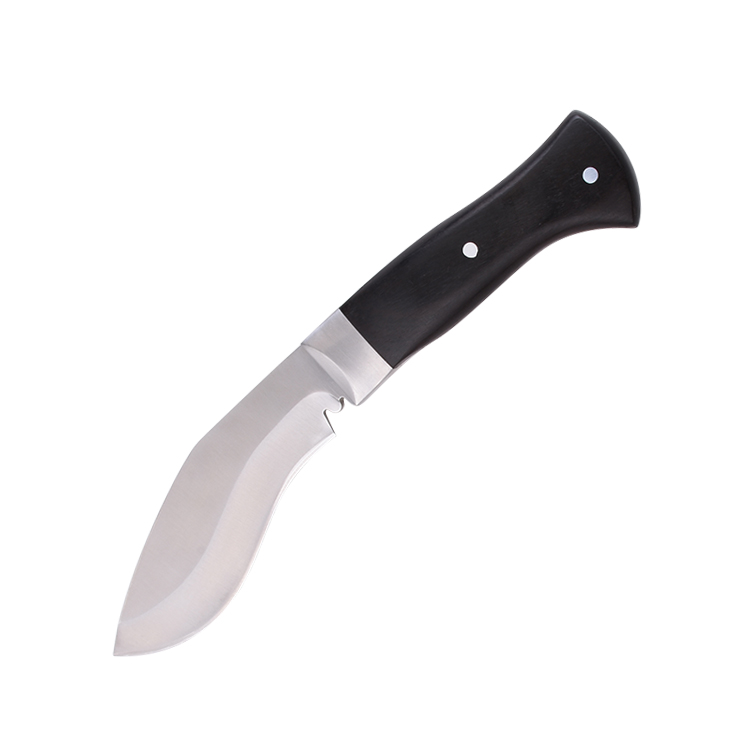9Cr18MoV stainless steel is a type of stainless steel commonly used in the making of pocket knives, particularly in China.
It contains a mix of chromium and a relatively high amount of carbon, which helps it achieve a strong balance of sharpness and the ability to hold an edge over time.
To be classified as stainless steel, an alloy must have at least 13% chromium and no more than 1.2% carbon, and 9Cr18MoV meets these standards well.
One of the standout features of this steel is its excellent resistance to rust and wear, making it a popular choice for knife enthusiasts seeking durability and longevity.
In this article, we will dive deeper into the pros and cons of using 9Cr18MoV in 칼 만들기 to see if it truly deserves a spot in your pocket.
Overview of 9Cr18MoV Steel
Chemical Composition and Its Impact
9Cr18MoV stainless steel is known for its unique chemical makeup, which significantly contributes to its performance as a knife material.
This alloy consists primarily of 18% chromium, which provides excellent corrosion resistance, preventing rust and tarnish from forming on the blade.
The carbon content at 0.95% enhances the steel’s hardness, allowing it to maintain a sharp edge for longer periods.
Additionally, elements like molybdenum, manganese, and vanadium introduce further enhancements by forming carbides, which create a tough blade structure that can withstand heavy usage.
Key Characteristics of 9Cr18MoV Steel
One of the standout qualities of 9Cr18MoV steel is its impressive balance between hardness and sharpness.
While the high chromium content ensures durability and resistance to environmental factors, the carbon aids in achieving optimal edge retention.
This means that knives made from this steel can be used frequently without requiring constant sharpening.
Furthermore, the fine grain structure created during the manufacturing processes enhances the steel’s overall performance, making it not only durable but also easy to hone back to a fine edge when needed.
Classification of 9Cr18MoV Steel
As a member of the stainless steel family, 9Cr18MoV meets essential classification criteria. Specifically, any alloy that contains at least 13% chromium and less than 1.2% carbon is categorized as stainless steel, which is important for ensuring resistance to oxidation and corrosion.
The unique blend of elements in 9Cr18MoV allows it to excel in various knife-making applications, delivering a reliable and resilient option for both manufacturers and knife enthusiasts alike.
In essence, 9Cr18MoV stainless steel strikes a promising balance of performance characteristics, making it a popular choice in pocket knives and other cutting tools.
Performance Characteristics of 9Cr18MoV
Hardness, Sharpness, and Wear Resistance
9Cr18MoV stainless steel is known for its impressive hardness, scoring between 58 to 60 HRC on the Rockwell Hardness Scale, with most blades averaging around 59 HRC.
This level of hardness means that knives made from this steel can hold a sharp edge for a long time, reducing the need for frequent sharpening.
However, it’s important to note that while the steel retains its sharpness well, when it does dull, it can take more effort and time to sharpen compared to softer steels.
Corrosion Resistance Comparison
When it comes to corrosion resistance, 9Cr18MoV performs quite well, thanks to its high chromium content. This makes it resistant to rust, even in damp conditions.
In comparison to other stainless steel materials, such as 420HC or AUS-8, 9Cr18MoV generally offers better corrosion resistance because of its higher chromium levels.
This means that if you often use your knife in wet or humid environments, 9Cr18MoV is a reliable choice.
Overall, while it competes well with other stainless steels, its balance of hardness and resistance makes it a strong contender for pocket knives and everyday use.
Comparison of 9Cr18MoV with Other Steel Types
9Cr18MoV vs. AUS-8
When comparing 9Cr18MoV with AUS-8, one notable difference is in edge retention. 9Cr18MoV holds its edge longer but can be more brittle.
AUS-8, a Japanese steel, contains vanadium that increases its hardness. On the Rockwell Hardness Scale, 9Cr18MoV typically scores between 58 and 60 HRC, while AUS-8 ranges from 57 to 59 HRC.
Thus, 9Cr18MoV may provide better long-term sharpness due to its higher hardness and tough characteristics.
9Cr18MoV vs. 8Cr13MoV
While 9Cr18MoV and 8Cr13MoV may initially appear similar, they exhibit significant differences in performance and composition.
9Cr18MoV is known for its higher levels of carbon (around 0.9%) and chromium (approximately 18%). This composition not only enhances its hardness and toughness but also increases its resistance to corrosion, making it an ideal choice for high-performance applications.
It is often used in premium kitchen knives and outdoor tools, where durability and longevity are paramount.
Additionally, the presence of molybdenum in 9Cr18MoV contributes to improved wear resistance, adding to its ability to maintain a sharp edge over time.
9Cr18MoV vs. D2
On paper, D2 steel might seem to outshine 9Cr18MoV because it has a higher carbon content, ranging from 1.4% to 1.6%, which gives it a slight advantage in hardness. Hardness is important for knives because it helps them stay sharp longer.
However, D2 steel only contains 12% chromium, which means it is not as resistant to rust and corrosion compared to stainless steels. This is a significant drawback if you plan to use your knife in wet conditions or for food preparation.
Both D2 and 9Cr18MoV contain about 1% molybdenum. Molybdenum is a key element that helps increase hardness and toughness and assists in forming hard carbides, which are tiny particles that enhance the steel’s performance.
Other Steels Similar to 9Cr18MoV
Two other steels comparable to 9Cr18MoV include 440C and VG-10. Both steels qualify as stainless steel and offer edge retention, hardness, and toughness similar to 9Cr18MoV.
This makes them viable alternatives for those seeking durable knives with great performance.
Application of 9Cr18MoV in Pocket Knives
Well-Known Pocket Knife Brands Using 9Cr18MoV
CIVIVI
The CIVIVI Praxis Flipper Knife (Model C803F) is a great choice for everyday carry. It features a 3.75-inch blade made of 9Cr18MoV stainless steel, giving it good hardness and a reliable edge. The knife is easy to operate with a smooth opening mechanism and has an attractive G10 handle.
SENCUT
Another excellent option is the SENCUT Excalis Flipper & Thumb Stud Knife (Model S23068-4). The 2.97-inch blade is crafted from 9Cr18MoV steel and offers a nice balance of strength and ease of use. This compact knife stands out due to its beautiful Guibourtia wood handle, making it both functional and stylish.
실돈
The Shieldon Tranchodon Folding Pocket Knife (Model 7093D1) showcases 9Cr18MoV in a premium design. With a 3.66-inch reverse tanto blade made from 67-layer Damascus steel, it delivers exceptional sharpness. Its robust G10 and carbon fiber handle add to its modern appeal, catering to both knife enthusiasts and everyday users.
Advantages and Limitations of 9Cr18MoV in Pocket Knives
9Cr18MoV is highly valued in pocket knives for several reasons. Its high chromium content means it is resistant to corrosion, making it suitable for use in moist environments. Additionally, the steel maintains a sharp edge well, which is essential for daily tasks.
However, 9Cr18MoV does come with some limitations. While it provides good hardness, it can be more brittle than other steels, which may affect durability if not cared for properly.
Users should be mindful that excessive force or impact can potentially chip the edge.
Overall, 9Cr18MoV is a solid choice for quality pocket knives, combining ease of maintenance with performance for regular use.
Maintenance and Care of 9Cr18MoV
Cleaning Techniques
To keep 9Cr18MoV blades in good condition for a long time, it’s important to clean them properly after each use.
Rinse the blade under warm water to get rid of any debris or residue. Then, use mild dish soap and a soft cloth or sponge to gently scrub the surface.
Avoid harsh chemicals or abrasive materials, as they can damage the steel’s finish. After cleaning, make sure to dry the blade completely to prevent moisture buildup, which can cause corrosion over time.
Regular Oil Application
Applying a light coat of food-safe mineral oil or knife oil is important for maintaining the blade’s condition.
This lubrication not only helps to protect against rust but also enhances the smooth operation of folding mechanisms.
Regular oiling should be part of your maintenance routine, ideally after cleaning or whenever the knife appears to have lost its luster.
Edge Maintenance
Keeping the edge sharp is critical for 9Cr18MoV blades’ performance. To maintain sharpness, use a whetstone or honing rod regularly, depending on the level of use.
For light maintenance, honing after every few uses can keep the edge aligned. When a more significant sharpening is necessary, employ appropriate sharpening techniques, ensuring you maintain the original angle of the edge for optimal results.
Storage Recommendations
Storing your knife correctly can significantly extend its service life. Keep the blade in a dry, cool place, ideally in a sheath or a designated storage case.
This prevents exposure to humidity, which can promote corrosion. If possible, avoid storing the knife in damp environments like kitchens or outdoors where moisture levels fluctuate.
Proper care and storage practices will help ensure that your 9Cr18MoV knife remains a reliable tool for years to come.
결론
In summary, 9Cr18MoV is a strong and reliable choice for 포켓 나이프, offering excellent corrosion resistance and edge retention.
Its combination of durability and ease of maintenance makes it suitable for everyday use.
When selecting a knife with a 9Cr18MoV blade, consider your specific needs and how you plan to use the knife, as well as the importance of regular care.
By following maintenance tips and storing the knife properly, you can ensure that it remains a dependable tool for many years.
자주하는 질문
What is the typical hardness level of 9Cr18MoV?
The typical hardness level of 9Cr18MoV stainless steel is around 58 to 60 HRC (Rockwell Hardness C scale). This hardness level provides a good balance of edge retention and toughness, making it suitable for various applications, particularly in pocket knives.
Is 9Cr18MoV suitable for making pocket knives?
Yes, 9Cr18MoV is highly suitable for making pocket knives. Its excellent corrosion resistance, combined with good edge retention and hardness, makes it a reliable choice for everyday use. The steel’s properties allow for the creation of durable blades that can withstand various tasks while being easy to maintain, which are essential qualities for pocket knives.
Does a 9Cr18MoV blade require special maintenance?
A 9Cr18MoV blade does not require special maintenance beyond typical knife care practices. Regular cleaning, oiling, and sharpening are essential for maintaining its performance and longevity.
Keeping the blade dry and storing it in a moisture-free environment further enhances its durability.
By following these standard maintenance steps, you can ensure your 9Cr18MoV knife remains in excellent condition without the need for additional specialized care.
How does 9Cr18MoV perform in real-world use?
In real-world use, 9Cr18MoV steel performs admirably, offering a solid balance of sharpness, edge retention, and corrosion resistance.
Users often notice that blades made from this steel retain their sharpness even with regular use, making them highly practical for daily tasks such as cutting, slicing, and general utility.
The stainless properties ensure that the blade remains effective in various environments, including those with moisture.
However, while it provides adequate toughness, users should exercise care to avoid chipping the edge by not applying excessive force. Overall, 9Cr18MoV demonstrates reliability and efficiency, making it a popular choice among knife enthusiasts and everyday users alike.
What is the heat treatment process for 9Cr18MoV steel?
The heat treatment process for 9Cr18MoV steel involves several key steps to enhance its hardness and performance.
First, the steel is heated to about 1050°C to 1100°C (1922°F to 2012°F) for uniform austenitizing. It is held at this temperature for a specific time to ensure proper structural changes.
Next, the steel is rapidly cooled, or quenched, typically in oil or water, to harden it by transforming austenite into martensite.
After quenching, the steel is tempered at a lower temperature, usually between 150°C to 200°C (302°F to 392°F), to relieve stresses and reduce brittleness while maintaining toughness and hardness.
This heat treatment process produces blades with excellent sharpness retention, durability, and wear resistance.

